History
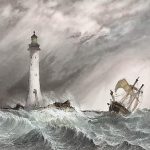
 As lighthouses go, Eddystone lighthouse is really quite different than most. The first Eddystone lighthouse was completed in 1699, and was the world’s first open ocean lighthouse, although the Cordouan lighthouse preceded it as the first offshore lighthouse. The Eddystone Lighthouse is on the dangerous Eddystone Rocks, 9 statute miles south of Rame Head, England, United Kingdom. While Rame Head is in Cornwall, the rocks are in Devon. Putting a lighthouse in the open ocean was a rather dangerous undertaking, but it was also an important lighthouse, because of the rocks it sat on. Without a lighthouse there, ships would run aground on the rocks.
As lighthouses go, Eddystone lighthouse is really quite different than most. The first Eddystone lighthouse was completed in 1699, and was the world’s first open ocean lighthouse, although the Cordouan lighthouse preceded it as the first offshore lighthouse. The Eddystone Lighthouse is on the dangerous Eddystone Rocks, 9 statute miles south of Rame Head, England, United Kingdom. While Rame Head is in Cornwall, the rocks are in Devon. Putting a lighthouse in the open ocean was a rather dangerous undertaking, but it was also an important lighthouse, because of the rocks it sat on. Without a lighthouse there, ships would run aground on the rocks.
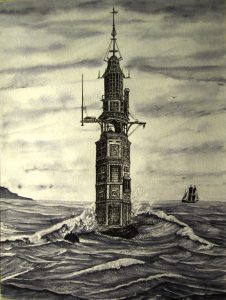
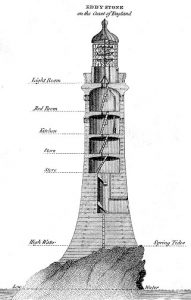
The Eddystone lighthouse fell to disaster three times, and was rebuilt threes times. The first disaster came just four years later, when the Great Storm of 1703 took with it, the first Eddystone lighthouse. The first and second lighthouses were constructed of wood. This was the material available at the time. It was also the wooden construction that made the lighthouse susceptible to the distructive storm and the fire that destroyed the first and second lighthouses…the storm in 1703 and the fire in 1755. The third lighthouse is often called Smeaton’s lighthouse. It was recommended by the Royal Society, civil engineer John Smeaton and was modeled in the shape on an oak tree, and built of granite blocks. He pioneered hydraulic lime, a concrete that cured under water, and developed a technique of securing the granite blocks using dovetail joints and marble dowels. Construction started in 1756 at Millbay and the light was first lit on October 16, 1759. It was state of the art in 
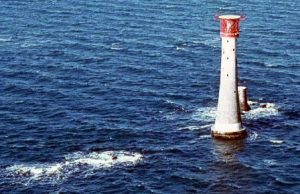 its time. It stood until 1877, when the rocks eroded enough to cause the lighthouse to rock from side to side in the waves, so it was deemed unsafe. The fourth and current lighthouse was built in April of 1879, and was designed by James Douglass, using Robert Stevenson’s developments of Smeaton’s techniques. By April 1879 the new site, on the South Rock was being prepared during the 3½ hours between ebb and flood tide. This current lighthouse is shorter and has a flat top, that is used to land helicopters.
its time. It stood until 1877, when the rocks eroded enough to cause the lighthouse to rock from side to side in the waves, so it was deemed unsafe. The fourth and current lighthouse was built in April of 1879, and was designed by James Douglass, using Robert Stevenson’s developments of Smeaton’s techniques. By April 1879 the new site, on the South Rock was being prepared during the 3½ hours between ebb and flood tide. This current lighthouse is shorter and has a flat top, that is used to land helicopters.
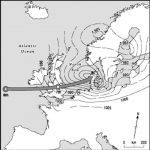
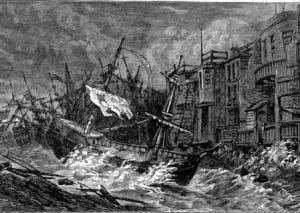 Back in the 1700s, there were no early warning systems for storms, and I suppose it wouldn’t matter anyway, at least not when it came to the Great Storm of 1703. The storm was a destructive extratropical cyclone that struck central and southern England on November 26, 1703, which would actually have been December 7, by today’s calendar. You see the dates all changed with the adoption of the Gregorian calendar, which was originally developed in 1582, but not adopted by England until 1752. The storm brought with it high winds topping 80 miles per hour, which may not seem so extreme on dry land, but over water, it’s devastating. In fact, the wind was so bad, that it actually blew 2,000 chimney stacks over in London. It also blew over 4,000 oak trees down in New Forest. The winds blew ships hundreds of miles off course, and over 1,000 seamen lost their lives on the Goodwin Sands alone.
Back in the 1700s, there were no early warning systems for storms, and I suppose it wouldn’t matter anyway, at least not when it came to the Great Storm of 1703. The storm was a destructive extratropical cyclone that struck central and southern England on November 26, 1703, which would actually have been December 7, by today’s calendar. You see the dates all changed with the adoption of the Gregorian calendar, which was originally developed in 1582, but not adopted by England until 1752. The storm brought with it high winds topping 80 miles per hour, which may not seem so extreme on dry land, but over water, it’s devastating. In fact, the wind was so bad, that it actually blew 2,000 chimney stacks over in London. It also blew over 4,000 oak trees down in New Forest. The winds blew ships hundreds of miles off course, and over 1,000 seamen lost their lives on the Goodwin Sands alone.
London suffered extensive damage. The lead roofing was blown off Westminster Abbey and Queen Anne had to seek shelter in a cellar at Saint James’s Palace to avoid collapsing chimneys and part of the roof. About 700 ships were heaped together in the Pool of London, which is the section of the Thames River downstream from the London Bridge. The ship HMS Vanguard was wrecked at Chatham. Admiral Sir Cloudesley Shovell’s HMS Association was blown from Harwich to Gothenburg in Sweden before it could make its way back to England. Pinnacles were blown from the top of King’s College Chapel, in Cambridge. At sea, many ships were wrecked, some of which were returning from helping Archduke Charles, the claimed King of Spain, fight the French in the War of the Spanish Succession. These ships included HMS Stirling Castle, HMS Northumberland, HMS Mary and HMS Restoration, with about 1,500 seamen killed particularly on the Goodwin Sands. Between 8,000 and 15,000 lives were lost overall.
The Church of England declared that the vicious storm was God’s vengeance for the sins of the nation. Maybe this is where the 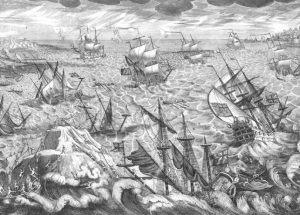
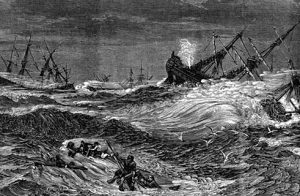 rediculous saying, “act of God” was coined. In fact, Daniel Defoe thought it was a divine punishment for poor performance against Catholic armies in the War of the Spanish Succession. That makes the whole statement even more ridiculous. I suppose people have to explain away these wild occurrences somehow, and since they didn’t have the science to explain the storm, they blamed God for it.
rediculous saying, “act of God” was coined. In fact, Daniel Defoe thought it was a divine punishment for poor performance against Catholic armies in the War of the Spanish Succession. That makes the whole statement even more ridiculous. I suppose people have to explain away these wild occurrences somehow, and since they didn’t have the science to explain the storm, they blamed God for it.

 Of the great minds that have lived, I think I like Albert Einstein the best. I suppose some people would disagree with me, but each person relates differently to people, than other people do. I wish I could have met Einstein, because I think we think a lot alike. Of course, I don’t claim to have anywhere near the level of IQ that he had, but I do see some similarities in how we think. We both had the tendency to think that if something can be written down, or in my case stored in my iPhone, then I don’t need to store it in my mind too.
Of the great minds that have lived, I think I like Albert Einstein the best. I suppose some people would disagree with me, but each person relates differently to people, than other people do. I wish I could have met Einstein, because I think we think a lot alike. Of course, I don’t claim to have anywhere near the level of IQ that he had, but I do see some similarities in how we think. We both had the tendency to think that if something can be written down, or in my case stored in my iPhone, then I don’t need to store it in my mind too.
For Einstein, who was a genius, not storing information in his head became a bit of a problem once, when he misplaced the train ticket he had just purchased. When the conductor came by to take his ticket, a frantic Einstein searched unsuccessfully for his ticket. Seeing that he was obviously very upset by this occurrence, the conductor told him, “It’s alright, Mr Einstein, I saw you buy your ticket.” Einstein, still highly upset, said, “It may be alright with you, but if I don’t find my ticket, I don’t know where to get off!” That must have shocked the conductor, because he knew that Albert Einstein rode the same train to and from work every day. Of course, many things are different these days, and I don’t ride a train, plus I’m quite good at navigation, so I don’t see myself not knowing where to get off or to turn, in my case, but it was a real problem to Albert Einstein. It was also an incident that I found amusing, given the mind this man had. Einstein is said to have had an IQ of between 160 and 190, and while I have not been tested, I am quite sure that my IQ is not as high as Einstein’s was, by any stretch of the imagination.
I do know that Einstein had the ability to understand things that would boggle the minds of most people. “Einstein showed that absolute time had to be replaced by a new absolute: the speed of light. Einstein went against the grain and totally dismissed the “Old Physics.” He envisioned a world where space and time are 
 relative and the speed of light is absolute. Prior to that time, it was believed that space and time were absolute and the speed of light was relative. In 1921, Albert Einstein was awarded the Nobel Prize in Physics “for his services to theoretical physics and especially for his discovery of the law of the photoelectric effect”. In 1925, he was awarded the Copley Medal by the Royal Society, which is perhaps the oldest surviving scientific award in the world. Einstein’s mind was so interesting to me, but to him, it was just normal.
relative and the speed of light is absolute. Prior to that time, it was believed that space and time were absolute and the speed of light was relative. In 1921, Albert Einstein was awarded the Nobel Prize in Physics “for his services to theoretical physics and especially for his discovery of the law of the photoelectric effect”. In 1925, he was awarded the Copley Medal by the Royal Society, which is perhaps the oldest surviving scientific award in the world. Einstein’s mind was so interesting to me, but to him, it was just normal.

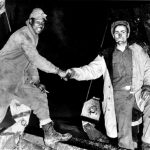 For as long as I can remember, the Alaskan Highway, known as the ALCAN Highway, has been something my parents, and especially my dad had been interested in…for most of his adult life, in fact. Construction began on the highway during World War II for the purpose of connecting the contiguous United States to Alaska through Canada. The highway begins in Dawson Creek, British Columbia, at the junction of several Canadian highways, and runs to Delta Junction, Alaska, via Whitehorse, Yukon. The highway was completed in 1942 at a length of 1,700 miles, but as of 2012, it is only 1,387 miles long. The difference is due to constant reconstruction of the highway, which has included rerouting and straightening numerous sections. The highway formally opened on November 21, 1942, but only for military use. It was not opened to the public until 1948. The highway has been legendary for decades as being a rough and challenging drive, probably because parts of it were not paved. Now however, the entire length is paved, so I suppose that took much of the difficulty out of it.
For as long as I can remember, the Alaskan Highway, known as the ALCAN Highway, has been something my parents, and especially my dad had been interested in…for most of his adult life, in fact. Construction began on the highway during World War II for the purpose of connecting the contiguous United States to Alaska through Canada. The highway begins in Dawson Creek, British Columbia, at the junction of several Canadian highways, and runs to Delta Junction, Alaska, via Whitehorse, Yukon. The highway was completed in 1942 at a length of 1,700 miles, but as of 2012, it is only 1,387 miles long. The difference is due to constant reconstruction of the highway, which has included rerouting and straightening numerous sections. The highway formally opened on November 21, 1942, but only for military use. It was not opened to the public until 1948. The highway has been legendary for decades as being a rough and challenging drive, probably because parts of it were not paved. Now however, the entire length is paved, so I suppose that took much of the difficulty out of it.
My dad has always loved to travel, and the ALCAN Highway literally called his name. It was his dream for all of his daughters and their families to caravan to Alaska by way of the ALCAN Highway. I think that needed to be a trip taken when we were all still single, and living at home, because it ended up being an unrealized dream 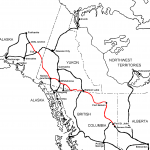
 from my dad’s life. I think Dad would have made the trip anytime we could all get our plans together, but that simply never happened. If one of us could have done it, some of the others couldn’t have, and Dad couldn’t fathom the idea of leaving anyone out. When their 50th wedding anniversary rolled around in 2003, my sisters and I decided that we needed to send them on an Alaska cruise, and while it was not the drive on the ALCAN Highway that Dad had wanted, it did let them visit Alaska, and that was the main thing…I suppose. They had a wonderful time, but I’m sure that it was a little bittersweet too, because they were there without their family. My husband, Bob and I, and my niece Toni Chase and her husband, Dave have since taken cruises to Alaska too, and I know my parents would be happy about that, but looking back now, I wish we could have figured out a way to make their dream of the drive on the ALCAN Highway a reality. I really do continue to regret that.
from my dad’s life. I think Dad would have made the trip anytime we could all get our plans together, but that simply never happened. If one of us could have done it, some of the others couldn’t have, and Dad couldn’t fathom the idea of leaving anyone out. When their 50th wedding anniversary rolled around in 2003, my sisters and I decided that we needed to send them on an Alaska cruise, and while it was not the drive on the ALCAN Highway that Dad had wanted, it did let them visit Alaska, and that was the main thing…I suppose. They had a wonderful time, but I’m sure that it was a little bittersweet too, because they were there without their family. My husband, Bob and I, and my niece Toni Chase and her husband, Dave have since taken cruises to Alaska too, and I know my parents would be happy about that, but looking back now, I wish we could have figured out a way to make their dream of the drive on the ALCAN Highway a reality. I really do continue to regret that.
Over the years, informal historic mileposts have been added to denote major stopping points in the highway’s construction. Dawson Creek sports the milepost marker for the start of the ALCAN Highway. Delta Junction, which is the end of the highway, makes reference to its location at Historic Milepost 1422. The Alaska Highway meets the Richardson Highway at this point. The Richardson Highway continues 96 miles to the city of 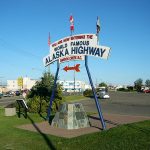
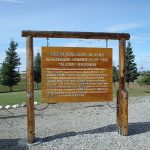 Fairbanks. This is often regarded, though unofficially, as the northern portion of the Alaska Highway, with Fairbanks at Historic Milepost 1520. It makes sense, but was not part of the original construction. The mileposts on this stretch of highway are measured from Valdez, rather than the Alaska Highway. Another oddity is that, the ALCAN Highway is popularly, though not officially, considered part of the Pan-American Highway, which extends south to Argentina, despite its discontinuity in Panama. It’s quite an amazing system, and I think I can see why my dad was so fascinated by it.
Fairbanks. This is often regarded, though unofficially, as the northern portion of the Alaska Highway, with Fairbanks at Historic Milepost 1520. It makes sense, but was not part of the original construction. The mileposts on this stretch of highway are measured from Valdez, rather than the Alaska Highway. Another oddity is that, the ALCAN Highway is popularly, though not officially, considered part of the Pan-American Highway, which extends south to Argentina, despite its discontinuity in Panama. It’s quite an amazing system, and I think I can see why my dad was so fascinated by it.
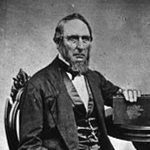
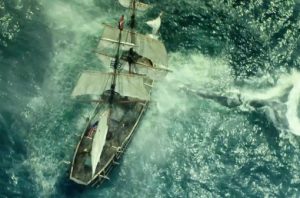 I’m sure most of us have read “Moby Dick” at some point in our school years. For those who haven’t, it was the story of a whale, and while I didn’t know this before, the book was actually based on a true story. The book, written by Herman Melville, was first published in 1851. Melville had heard about the incident involving a whaling ship that had been attacked by a sperm whale…a giant 85 foot sperm whale, a few years earlier, and like most writers, there are just some things that you can’t get out of your head. Those are the stories that you know that you must write. Melville’s research gave him the facts of the incident, but it didn’t take him full circle to actually being in the place where that ship had started it fateful journey…Nantucket. Melville knew that someday he would have to make the trip to the Massachusetts island, where Captain George Pollard Jr lived. Pollard was the man Melville had modeled his fictional Captain Ahab after.
I’m sure most of us have read “Moby Dick” at some point in our school years. For those who haven’t, it was the story of a whale, and while I didn’t know this before, the book was actually based on a true story. The book, written by Herman Melville, was first published in 1851. Melville had heard about the incident involving a whaling ship that had been attacked by a sperm whale…a giant 85 foot sperm whale, a few years earlier, and like most writers, there are just some things that you can’t get out of your head. Those are the stories that you know that you must write. Melville’s research gave him the facts of the incident, but it didn’t take him full circle to actually being in the place where that ship had started it fateful journey…Nantucket. Melville knew that someday he would have to make the trip to the Massachusetts island, where Captain George Pollard Jr lived. Pollard was the man Melville had modeled his fictional Captain Ahab after.
On his last day in Nantucket, Melville met George Pollard Jr, who was the captain of the Essex. He was an old man of 60 years, and in reality, probably didn’t resemble the captain of the Essex much at that point. He had been through so much. As they talked, Pollard told Melville’s fictional story from a far too real perspective…being there. Pollard was just 29 years old when he and his crew set out for a voyage that was to have lasted two and a half years. After the sinking of the Essex, Pollard told the full story to fellow captains over a dinner shortly after his rescue from the ordeal, and to a missionary named George Bennet. Bennet thought the tale was almost a confession. He told them of “92 days and sleepless nights at sea in a leaking boat with no food, his surviving crew going mad beneath the unforgiving sun, eventual cannibalism and the harrowing fate of two teenage boys, including Pollard’s first cousin, Owen Coffin.” Then he said, “But I can tell you no more…my head is on fire at the recollection. I hardly know what I say.”
Just two days after leaving Nantucket, Essex’s ordeal began. It was August 14, 1819. They hit a squall that destroyed it’s topgallant sail, almost causing it to sink. Still, Pollard continued on, making it to Cape Horn five weeks later. But the 20-man crew found the waters off South America nearly fished out, so they decided to sail for distant whaling grounds in the South Pacific, far from any shores. By November of 1820, after months of a prosperous voyage and a thousand miles from the nearest land, whaleboats from the Essex had harpooned whales that dragged them out toward the horizon in what the crew called “Nantucket sleigh rides.” Owen Chase, the 23 year old first mate, had stayed aboard the Essex to make repairs while Pollard went whaling. It was Chase who spotted a very big whale…85 feet in length, he estimated…lying quietly in the distance, its head facing the ship. Then, after two or three spouts, the giant whale headed straight for the Essex, “coming down for us at great celerity,” Chase would recall, “at about three knots. The whale smashed head-on into the ship with such an appalling and tremendous jar, as nearly threw us all on our faces.”
The whale passed underneath the ship and began thrashing in the water. “I could distinctly see him smite his jaws together, as if distracted with rage and fury,” Chase recalled. Then the whale disappeared. The crew was addressing the hole in the ship and getting the pumps working when one man cried out, “Here he is…he is making for us again.” Chase spotted the whale, his head half out of water, bearing down at great speed…this time at six knots, Chase thought. This time it hit the bow directly under the cathead and disappeared for good, but the damage was done. The water rushed into the ship so fast, the only thing the crew could do was lower the boats and try to fill them with navigational instruments, bread, water and supplies before the Essex turned over on its side. Pollard saw his ship listing from a distance, tand returned to see the Essex in ruin. In shock, 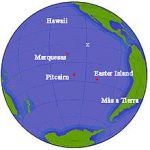
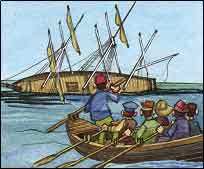 he asked the first mate what had happened. I’m sure the tale seemed incredulous, but the evidence was right there staring them in the face. When the other boats returned, the men sat in silence, their captain still pale and speechless. Some, Chase observed, “had no idea of the extent of their deplorable situation.” Out of the original 20 men and 3 boats that set out, only 5 men would survive the ordeal, and that included a long time floating around the ocean, men dying, and the eventual cannibalism required to survive.
he asked the first mate what had happened. I’m sure the tale seemed incredulous, but the evidence was right there staring them in the face. When the other boats returned, the men sat in silence, their captain still pale and speechless. Some, Chase observed, “had no idea of the extent of their deplorable situation.” Out of the original 20 men and 3 boats that set out, only 5 men would survive the ordeal, and that included a long time floating around the ocean, men dying, and the eventual cannibalism required to survive.
 For many years the United States and Russia, at one time the Soviet Union, have had an unusual relationship. Depending on what Russia is trying to do, they might be our enemy, or they might be our ally. I understand that different nations have different goals, different values, and different motives, but it still seems odd to me that in one war, we could be allies and in another war, we become enemies. It could seem a little bit like two childhood friends, who are best friends one minute and worst enemies the next minute. The only exception would have to be the fact that trust doesn’t really fit in with the rest of the characteristics of the relationship between the United States and Russia. I suppose that becoming allies then, becomes a matter of finding an enemy who is doing things you can’t accept, and another enemy who agrees with you on your dislike of the actions of the first enemy…if that makes sense. I think that my prior statement makes as much sense as the United States being an ally of Russia, but that is what they have been…sometimes. I think the most difficult part of that kind of relationship would have to be the point when the relationship turns from ally to enemy again, because it really is inevitable.
For many years the United States and Russia, at one time the Soviet Union, have had an unusual relationship. Depending on what Russia is trying to do, they might be our enemy, or they might be our ally. I understand that different nations have different goals, different values, and different motives, but it still seems odd to me that in one war, we could be allies and in another war, we become enemies. It could seem a little bit like two childhood friends, who are best friends one minute and worst enemies the next minute. The only exception would have to be the fact that trust doesn’t really fit in with the rest of the characteristics of the relationship between the United States and Russia. I suppose that becoming allies then, becomes a matter of finding an enemy who is doing things you can’t accept, and another enemy who agrees with you on your dislike of the actions of the first enemy…if that makes sense. I think that my prior statement makes as much sense as the United States being an ally of Russia, but that is what they have been…sometimes. I think the most difficult part of that kind of relationship would have to be the point when the relationship turns from ally to enemy again, because it really is inevitable.
It is historical fact, that over the years the Untied States and Russia have found themselves on opposite sides of a war…even threatening to blow each other up with a nuclear bomb, but so far, both have also hesitated to take things to that level, because the start of that kind of war would likely bring inhalation, since each country has the ability to know that such an attack has started. It’s a good thing that technology has given us that ability, because if we had the nuclear bombs we now have and no way the know that an attack had commenced, one nation could easily wipe out another. Russia has often tested the United States when they have moved to attack weaker nations for the things they wanted, such as oil, food, and power. Their actions left the United States with no other options but to fight against the nation that was sometimes an ally. It has happened in the past, and it will happen again in the future, because Russia remains an enemy of Israel, and that at the very least, is a situation in which the United States would want to act. Israel has always been our ally…not a sometimes ally, and if we are able, we would protect them. At least I pray that we would.
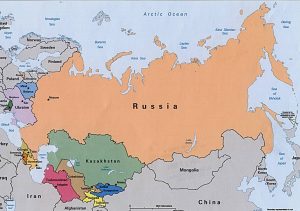 The biggest factor to affect the relationships between countries is their leaders. Most of the history of the United States has found our leaders acknowledging and even embracing our longtime, and very important friendship with Israel. Nevertheless, some leaders, like our current president, have made it clear that Israel is in a precarious position in the world. I am thankful that our president elect has told us that he will be a friend to Israel and other nations that have been oppressed by power nations in the past. It remains to be seen, exactly where Russia will be in this scenario. It is my hope that they will be an ally, but I know that they are still an enemy of our friends, and that can only make us sometimes allies.
The biggest factor to affect the relationships between countries is their leaders. Most of the history of the United States has found our leaders acknowledging and even embracing our longtime, and very important friendship with Israel. Nevertheless, some leaders, like our current president, have made it clear that Israel is in a precarious position in the world. I am thankful that our president elect has told us that he will be a friend to Israel and other nations that have been oppressed by power nations in the past. It remains to be seen, exactly where Russia will be in this scenario. It is my hope that they will be an ally, but I know that they are still an enemy of our friends, and that can only make us sometimes allies.

 I have always been somewhat amazed that, after a war is over, it seems that there must follow a trial for war crimes. It isn’t so much the trial, the obvious crimes against humanity that are always a part of war, or even the outrage over it all, that most amazes me, but rather the fact that even in war, people are expected to follow certain standards, or rules of engagement. I think that there are evil people on either side of a war, but some wars seem to have more evil involved than others…or maybe we were just more appalled in earlier wars. I think that is a possibility, because we have all become less shocked by the heinous acts people are able to perform. Still, I am completely shocked that they can stomach such things without becoming violently ill.
I have always been somewhat amazed that, after a war is over, it seems that there must follow a trial for war crimes. It isn’t so much the trial, the obvious crimes against humanity that are always a part of war, or even the outrage over it all, that most amazes me, but rather the fact that even in war, people are expected to follow certain standards, or rules of engagement. I think that there are evil people on either side of a war, but some wars seem to have more evil involved than others…or maybe we were just more appalled in earlier wars. I think that is a possibility, because we have all become less shocked by the heinous acts people are able to perform. Still, I am completely shocked that they can stomach such things without becoming violently ill.
The horrible crimes committed against the Jews and the Gypsies prior to and during World War II, were crimes 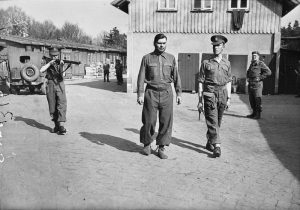 that the Allies simply could not overlook. The Belsen trial was one of several trials the Allied occupation forces held against former officials of Nazi Germany after the end of the war. The Belsen trial took place in Lüneburg, Lower Saxony, Germany in 1945. The defendants were men and women of the SS as well as prisoner officials who had worked at various concentration camps, notably Auschwitz and Bergen-Belsen. People around the world were interested in these trials, and as the public heard for the first time from some of those responsible for the mass murder in the eastern extermination camps, they were filled with contempt. Some later trials are also referred to as Belsen trials, a name that became synonymous with war crime trails of World War II.
that the Allies simply could not overlook. The Belsen trial was one of several trials the Allied occupation forces held against former officials of Nazi Germany after the end of the war. The Belsen trial took place in Lüneburg, Lower Saxony, Germany in 1945. The defendants were men and women of the SS as well as prisoner officials who had worked at various concentration camps, notably Auschwitz and Bergen-Belsen. People around the world were interested in these trials, and as the public heard for the first time from some of those responsible for the mass murder in the eastern extermination camps, they were filled with contempt. Some later trials are also referred to as Belsen trials, a name that became synonymous with war crime trails of World War II.
When the trials ended, and those who chose to commit such horrible acts as the Holocaust, Porajmos, and other war related crimes were found guilty, it was time for the next step in the justice process…carrying out the 
 sentencing. A report was made on November 18, 1945, regarding the completion of the Belsen Trial the day before, and the final outcome of said trial. Then, on December 13, 1945, Joseph Kramer and Irma Grese, the monarchs of Belsen were two of the people hanged for Nazi concentration camp crimes, according to the sentences imposed on them after the trial. Nine other concentration staff members were also hanged on the same day. Sentencing and the carrying out of said sentence was certainly handled more quickly than they would have been in this day and age.
sentencing. A report was made on November 18, 1945, regarding the completion of the Belsen Trial the day before, and the final outcome of said trial. Then, on December 13, 1945, Joseph Kramer and Irma Grese, the monarchs of Belsen were two of the people hanged for Nazi concentration camp crimes, according to the sentences imposed on them after the trial. Nine other concentration staff members were also hanged on the same day. Sentencing and the carrying out of said sentence was certainly handled more quickly than they would have been in this day and age.
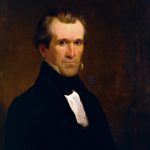 I was looking at a fact site last night, and found a list of unusual facts about the presidents of the United States. While the facts about each president were everything from strange, to bizarre, to amazing, I found myself drawn to what I read about James K Polk, who happens to be the 2nd cousin 1x removed of the husband of my 5th cousin 2x removed. That sounds very confusing to people, and I can say that it is confusing to me too. Nevertheless, my family and my husband, Bob’s family trees are intertwined, and that is a fact I have known for a while now. James Polk is just another in the line of people we are both connected to. Those are the facts I knew about James K Polk…as well as, the fact that his middle name is Knox and that is how he is related to Bob’s side of our family. My own connection comes from the Allen side of my dad’s family…and that I did not know before.
I was looking at a fact site last night, and found a list of unusual facts about the presidents of the United States. While the facts about each president were everything from strange, to bizarre, to amazing, I found myself drawn to what I read about James K Polk, who happens to be the 2nd cousin 1x removed of the husband of my 5th cousin 2x removed. That sounds very confusing to people, and I can say that it is confusing to me too. Nevertheless, my family and my husband, Bob’s family trees are intertwined, and that is a fact I have known for a while now. James Polk is just another in the line of people we are both connected to. Those are the facts I knew about James K Polk…as well as, the fact that his middle name is Knox and that is how he is related to Bob’s side of our family. My own connection comes from the Allen side of my dad’s family…and that I did not know before.
James K Polk was the first president to be elected under the age of 50, and the youngest to die, with the exception of Garfield and Kennedy, both of whom were assassinated. Polk had surgery at the age of 17, to remove stones from his bladder. This was before anesthesia was invented, so he was awake for the entire 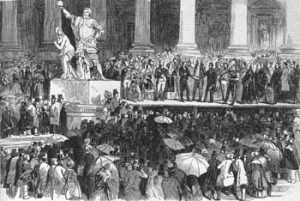 procedure. I can’t imagine how painful that must have been. Polk is the only Speaker of the US House of Representatives to become President of the United States. His years as president were active ones. They saw three states added to the nation, the first Women’s Rights Convention was held, the sewing machine, gas lighting, and the rotary printing press were invented, and the Gold Rush began. Polk was a highly motivated president, and it is believed that he worked so hard while serving as president that he weakened himself, causing his death shortly after leaving office.
procedure. I can’t imagine how painful that must have been. Polk is the only Speaker of the US House of Representatives to become President of the United States. His years as president were active ones. They saw three states added to the nation, the first Women’s Rights Convention was held, the sewing machine, gas lighting, and the rotary printing press were invented, and the Gold Rush began. Polk was a highly motivated president, and it is believed that he worked so hard while serving as president that he weakened himself, causing his death shortly after leaving office.
Polk had just two years of formal schooling prior to entering the University of North Carolina as a sophomore. He was a member of a debating society in college, and he found that he had an interest in law and government. Polk graduated with top honors in mathematics and the classics. Then he returned home to Tennessee to become a lawyer. To receive legal training, he worked in the office of Nashville trial attorney, Felix Grundy and then served as clerk of the Tennessee Senate. Polk was diligent and ambitious, and soon 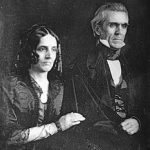 established a law practice in Columbia, Tennessee. At 27 years of age, Polk’s interests turned to politics, and he defeated an incumbent for a seat in the Tennessee Legislature. During his time as state representative, he met and eventually married Sarah Childress, who was the very intelligent daughter of a Murfreesboro merchant. She was well educated and her social grace impressed their peers. She became her husband’s personal and political confidant, it was her involvement in his campaigns that helped to ensure his victories. Fervently supporting the policies of fellow Tennessee Democrat Andrew Jackson, Polk was elected to the United States Congress at 29. His Congressional career lasted 14 years and included two terms as Speaker of the House. He must have been well liked to then go on the become President of the United States as well.
established a law practice in Columbia, Tennessee. At 27 years of age, Polk’s interests turned to politics, and he defeated an incumbent for a seat in the Tennessee Legislature. During his time as state representative, he met and eventually married Sarah Childress, who was the very intelligent daughter of a Murfreesboro merchant. She was well educated and her social grace impressed their peers. She became her husband’s personal and political confidant, it was her involvement in his campaigns that helped to ensure his victories. Fervently supporting the policies of fellow Tennessee Democrat Andrew Jackson, Polk was elected to the United States Congress at 29. His Congressional career lasted 14 years and included two terms as Speaker of the House. He must have been well liked to then go on the become President of the United States as well.
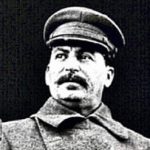
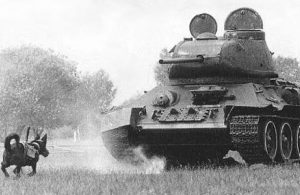 Over the years, people have trained dogs to perform many tasks that were too dangerous for their human counterparts…knowing that the very act of doing their duty would likely cost the dog its life. I think many of us would be sickened by the things these loyal animals went through, but I suppose that in the eyes of their trainers, they were heroes. During World War II, Joseph Stalin approved the use of “canine killers” to fight against German tanks. I think that in most ground wars, the tank is probably the most dreaded weapon there is. In many ways, it is like fighting a robot…it’s almost impossible to kill. The tanks could go right into the middle of the battle, and in fact, right over the people in front of them. They could also shoot from a distance. They were a major weapon against the ground troops. Stalin wanted a weapon to use against them, and decided that the dogs were just the right weapon.
Over the years, people have trained dogs to perform many tasks that were too dangerous for their human counterparts…knowing that the very act of doing their duty would likely cost the dog its life. I think many of us would be sickened by the things these loyal animals went through, but I suppose that in the eyes of their trainers, they were heroes. During World War II, Joseph Stalin approved the use of “canine killers” to fight against German tanks. I think that in most ground wars, the tank is probably the most dreaded weapon there is. In many ways, it is like fighting a robot…it’s almost impossible to kill. The tanks could go right into the middle of the battle, and in fact, right over the people in front of them. They could also shoot from a distance. They were a major weapon against the ground troops. Stalin wanted a weapon to use against them, and decided that the dogs were just the right weapon.
The dogs, usually Alsatians, called “Hundminen” or “dog mines” were trained by the Russians to run under German tanks, at which point the bomb strapped to their backs would explode, destroying the tank…and the dog too, of course. The dogs were going to be their secret weapon, but there was just one problem, at least with the first batch of Kamikaze Dog trainees. The dogs had been trained with Soviet tanks, not German ones. Soviet and German tanks used different types of fuel, and some of the dogs sniffed out the fuel they were used to and trotted off to blow up the tanks used by the very military that trained them. I’m sure that must have been quite a shock to their trainers. The dogs were initially trained to transport explosives to tanks, armored vehicles and other various targets, and then retreat before the bomb exploded, but when that didn’t work well, the routine was replaced by impact detonation, which resulted in the dog’s death. The training began in 1930, and whether they were useful or not the dogs were used in battle. Kamikaze Dogs started to be used less and less from 1942 onwards, though there were Kamikaze Dogs that continued to be trained until 1996.
I find myself feeling horrified by the picture this practice paints. Dogs are usually very loyal, and all they want to do is please their master. They trust their master, or in this case, their trainer, only to be rewarded with 
 death. I’m sure that the Russians eventually got the dogs to the point where they recognized the right targets, or the practice wouldn’t have continued until about 1990. The Soviets have said that about 300 tanks had been destroyed by Kamikaze Dogs, but that number has been questioned by many. Most people think the number was probably made up by the Soviet government in an effort to justify the program, and particularly to justify killing so many dogs with so few results. What a horrible practice.
death. I’m sure that the Russians eventually got the dogs to the point where they recognized the right targets, or the practice wouldn’t have continued until about 1990. The Soviets have said that about 300 tanks had been destroyed by Kamikaze Dogs, but that number has been questioned by many. Most people think the number was probably made up by the Soviet government in an effort to justify the program, and particularly to justify killing so many dogs with so few results. What a horrible practice.
 When we think of the horrors of the Holocaust, we think of millions of Jewish people who were murdered because they were Jewish. The horrible things Hitler did are so awful, that most of us can hardly bare to think about it at all. It is uncertain just when the Holocaust began, but the accepted date is January 30, 1933. That date is when Adolf Hitler was appointed German chancellor, setting in motion what would become the Nazi genocide against the Jews. On September 15, 1935, the Nuremberg Laws were enacted. The Nuremberg Laws were anti-Jewish statutes enacted by Germany, that were a major step in clarifying racial policy and removing Jewish influences from Aryan society. These laws, were the foundation on which the rest of Nazi racial policy hung.
When we think of the horrors of the Holocaust, we think of millions of Jewish people who were murdered because they were Jewish. The horrible things Hitler did are so awful, that most of us can hardly bare to think about it at all. It is uncertain just when the Holocaust began, but the accepted date is January 30, 1933. That date is when Adolf Hitler was appointed German chancellor, setting in motion what would become the Nazi genocide against the Jews. On September 15, 1935, the Nuremberg Laws were enacted. The Nuremberg Laws were anti-Jewish statutes enacted by Germany, that were a major step in clarifying racial policy and removing Jewish influences from Aryan society. These laws, were the foundation on which the rest of Nazi racial policy hung.
The Jewish people were not the only group of people who came to the attention of Hitler’s insane mind either. Under the rule of Adolf Hitler, a supplementary decree to the Nuremberg Laws was issued on November 26, 1935, defining Gypsies as “enemies of the race-based state”, the same category as Jews. The Nuremberg racial  laws of September 15, 1935, “Law for the Protection of German Blood and Honor” and “Reich Citizenship Law” did not explicitly mention Gypsies, but in commentaries interpreting these laws, “Gypsies were included, along with Jews and Negros, as racially distinctive minorities with alien blood. As such, their marriage to Aryans was prohibited.” Like the Jews, the Gypsies were also deprived of their civil rights. Hitler viewed Jews and Gypsies as a defective race, in fact he viewed all non-white people as defective. I suppose this view was what originally justified Hitler’s brutal murder of 6 million Jews and who knows how many people of other races. On this day, November 15, 1943, Heinrich Himmler, who was the Reichsführer of the Schutzstaffel (Protection Squadron, or SS), and a leading member of the Nazi Party (NSDAP) of Nazi Germany ordered that Gypsies and those of mixed Gypsy blood are to be put on “the same level as Jews and placed in concentration camps.”
laws of September 15, 1935, “Law for the Protection of German Blood and Honor” and “Reich Citizenship Law” did not explicitly mention Gypsies, but in commentaries interpreting these laws, “Gypsies were included, along with Jews and Negros, as racially distinctive minorities with alien blood. As such, their marriage to Aryans was prohibited.” Like the Jews, the Gypsies were also deprived of their civil rights. Hitler viewed Jews and Gypsies as a defective race, in fact he viewed all non-white people as defective. I suppose this view was what originally justified Hitler’s brutal murder of 6 million Jews and who knows how many people of other races. On this day, November 15, 1943, Heinrich Himmler, who was the Reichsführer of the Schutzstaffel (Protection Squadron, or SS), and a leading member of the Nazi Party (NSDAP) of Nazi Germany ordered that Gypsies and those of mixed Gypsy blood are to be put on “the same level as Jews and placed in concentration camps.”
Hitler’s decision to include the Gypsies, and the ensuing murders of up to 500,000 Romani Gypsies, became known as the Romani Holocaust, or Porajmos, which means cutting, fragmentation, or destruction; or  Samudaripen, which means mass killing. It was Nazi Germany and its allies planned and attempted effort to exterminate the Romani Gypsy people of Europe. Some historians put the death toll as high as 1.5 million. In 1982, West Germany formally recognized that genocide had been committed against the Romani. In 2011 the Polish Government passed a resolution for the official recognition of August 2nd as a day of commemoration of the genocide. As I was researching this horrific genocide, I began to wonder how it was that I had never heard about it before. Was I living under a rock? In reality, I doubt if it was in any of the history books of my time, because no one admitted that it happened until 1982, at the earliest.
Samudaripen, which means mass killing. It was Nazi Germany and its allies planned and attempted effort to exterminate the Romani Gypsy people of Europe. Some historians put the death toll as high as 1.5 million. In 1982, West Germany formally recognized that genocide had been committed against the Romani. In 2011 the Polish Government passed a resolution for the official recognition of August 2nd as a day of commemoration of the genocide. As I was researching this horrific genocide, I began to wonder how it was that I had never heard about it before. Was I living under a rock? In reality, I doubt if it was in any of the history books of my time, because no one admitted that it happened until 1982, at the earliest.

